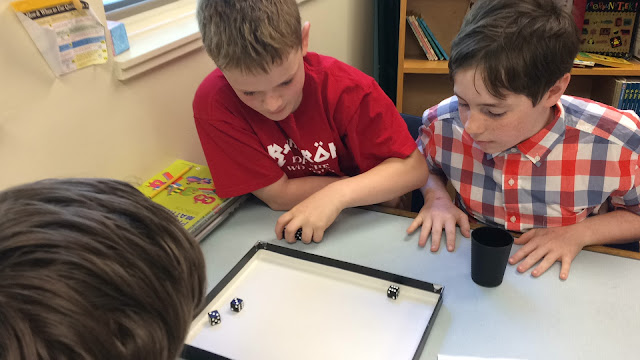In this blog post, enjoy the many attempts that I made, along with a smattering of various happenings from the last few weeks.
Here's a video that you may have seen over email. Ella has called it "the trailer for our class."
We've had a few birthdays lately. It's a class tradition to allow the birthday person to choose a class activity in celebration. On Ella's birthday, she opted for "class karaoke." Watch the video below at your peril.
There has been a lot of wetland exploration at recess.
Shan was unexpectedly out sick for PE one day, so we picked a park, got on a bus, and headed over to check it out.
In Math, kids are doubling down on their book work, setting personal goals for the end of the year. Some classes are spent working toward those goals, others are spent playing math games. Here are a couple of moments from a class game of Farkle, which is a favorite.
There have been a number of presentations lately. We've been learning about the American Revolution, and Nick prepared a lecture on the military tactics of that time.
Later, Miel and Bora presented on guinea pigs, complete with a guest appearance by Miel's pets.
 |
| Oliver the human meets Oliver the guinea pig. |
Our milkweed & monarch project continues to require a significant amount of work. The good news is that our beds are almost prepared.
 |
| This was on Juna's birthday. This probably wasn't how she planned on spending it. |
 |
| Rest for the weary. |
 |
| Our impact study. We delicately examine logs, looking to see what might be living in the area where we were digging. |
 |
| Here's what we found! These are the mystery eggs discovered beneath a log (pillbug provided for scale). Any ideas on what they are? |
 |
| This is the site where we harvested soil for our beds. What is the impact of our actions? What did this site look like before, and what will it look like after we've gone? Now that we've seen the small impact that we made, we were led to wonder where soil purchased from stores comes from? |




































